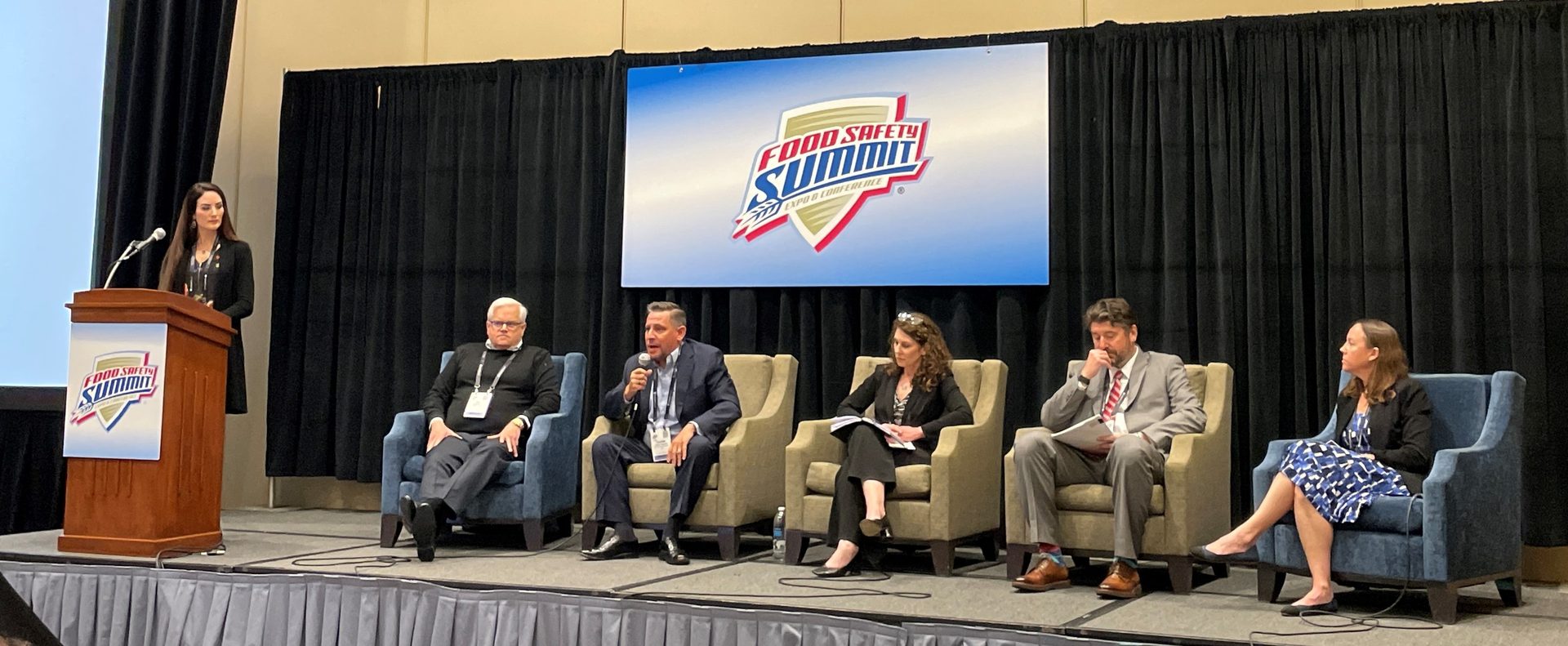
California Rushes to Tackle Toxic Food Additives as FDA Looks to Catch Up
SCROLL
DOWN
As much of industry is no doubt aware, California Governor Gavin Newsom signed into law the California Food Safety Act on October 7, officially banning the inclusion of four additives in food from January 1, 2027. These additives—red dye 3, potassium bromate, brominated vegetable oil (BVO), and propylparaben—have been declared harmful to human health and are already banned in food in the EU. A similar bill that includes a fifth additive, titanium dioxide, has been proposed in the New York Senate.
Titanium dioxide was originally included in the California legislation, but was dropped to gain support for the California Senate vote before going to Governor Newsom. Titanium dioxide, which has been declared safe by the U.S. Food and Drug Administration (FDA), as well as food safety agencies in Canada, the UK, Australia/New Zealand, and the Japanese National Institute of Health Sciences, was previously reclassified as a carcinogen by the European Commission (EC). In November 2022, however, the EU Court of Justice ruled to annul the EC's decision after questioning the reliability of the study on which the reclassification was based.
All Aboard the California Regulatory Train
California is not the only entity taking action on food additives, but it is tackling the issue most aggressively. As of press time, FDA is designing a proposed rule to amend its regulations to remove the authorization of BVO as a food ingredient in light of a published study that raises potential safety concerns.
I attended an exclusive media roundtable with the new Deputy Commissioner for Human Foods, James (Jim) Jones, on October 19. During the roundtable, Jones discussed his priorities for the new, unified Human Foods Program and also addressed the issue of BVO, among other topics. As media were given the opportunity to ask questions, I brought up FDA's proposed rule on BVO and noted that the chemical is one of those banned by the California Food Safety Act and the New York Senate proposed bill. I asked Jones if this kind of legislation at the state level undermines FDA's authority to set regulations at the federal level.
The Deputy Commissioner explained that the states do not preempt federal law, but that they do have the ability to make their own standards and regulations. "Ideally, when the federal government is more active in the regulatory process, then the states don't feel as much need to act," he answered, adding that FDA would be addressing the issue of food additives more closely under his leadership.
It will be interesting to watch FDA's progress on this front. The California bill's sponsor, Jesse Gabriel (D-46), blamed "a concerning lack of federal oversight" for the inclusion of harmful additives in food—specifically, the Generally Recognized as Safe (GRAS) "loophole," which purportedly allows for certain food additives to be used in the U.S. without premarket review and approval by FDA, as long as they have been "adequately shown to be safe under the conditions of intended use" through common use or scientific evidence. FDA refuted Gabriel's claims of the chemicals being allowed in the U.S. food system solely due to a lack of federal oversight.

“Ideally, when the federal government is more active in the regulatory process, then the states don't feel as much need to act.”
— Deputy Commissioner for Human Foods, Jim Jones


Mixed Reactions to California's Legislative Play
One thing is certain: what governs California's food supply will, in turn, govern the nation's. Food processors nationwide, as well as regional exporters to the U.S., that currently use one or more of the four banned additives will need to reformulate their recipes or substitute ingredients in order to continue selling their products in the huge California market, as well as nationwide.
Some food regulatory experts and industry trade groups have expressed their disapproval of the first-of-its-kind California Food Safety Act, for reasons ranging from a lack of basis in scientific process to its potential to cause discord in U.S. food regulation. Former Deputy Commissioner of Food Policy and Response Frank Yiannas says that the legislation sets a "dangerous precedent" on how food safety standards in the U.S. are established, saying, "Without relying on a strong, science-driven federal food safety agency, our country is left with a state-by-state patchwork of different, emerging regulatory standards that would weaken our nation's food system and food safety efforts."
The National Confectioner's Association (NCA) also shared its opinion that the law "replaces a uniform national food safety system with a patchwork of inconsistent state requirements created by legislative fiat that will increase food costs." NCA called the act "a slippery slope that FDA could prevent by engaging on this important topic."
However, the legislation has been supported from the beginning by consumer protection organizations like the Environmental Working Group and Consumer Reports, as well as the Center for Science in the Public Interest.
As California surges ahead with its broadly effective food additives legislation, FDA remains focused on a modernized, systematic reassessment of food chemical safety, including a new framework for systematic post-market chemical reassessment. FDA says that this enhanced approach will require more funding and additional authorities, which the agency will need if it wants to catch up with California's progressive rulemaking to benefit public health.
Regards,
Adrienne Blume, Editorial Director

References
- U.S. Food and Drug Administration. "Adoption of the FDA Food Code by State and Territorial Agencies Responsible for the Oversight of Restaurants and/or Retail Food Stores." 2021. https://www.fda.gov/media/107543/download.
